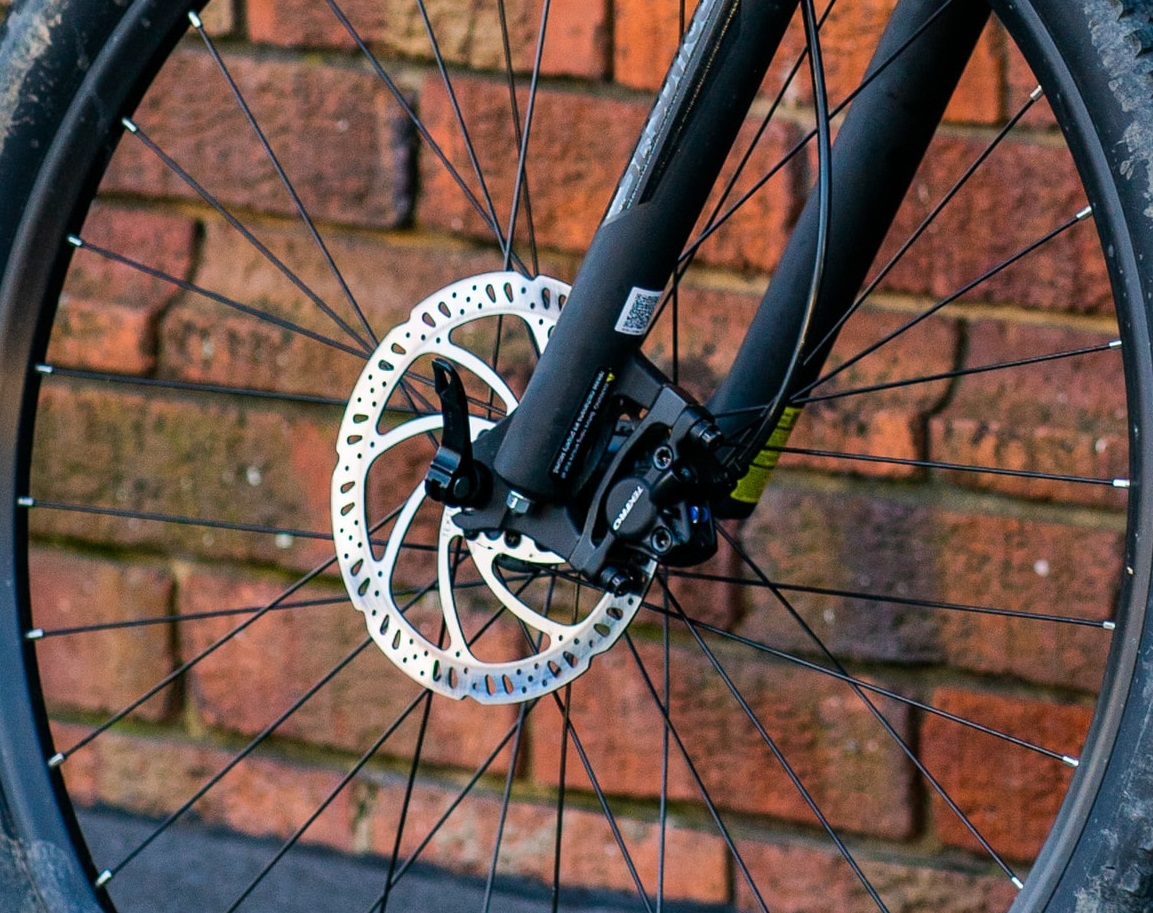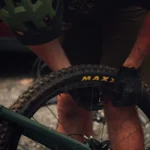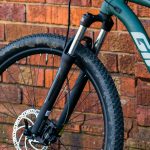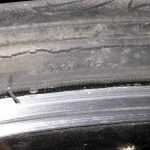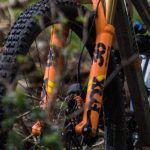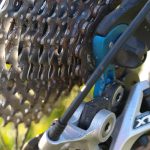Properly functioning hydraulic disc brakes remain one of the most important components on any mountain bike. When brakes feel mushy or lack power, it becomes impossible to ride fast while in control. Keeping your brake system running smoothly with consistent lever pressure and modulation gets top priority. The ideal times to bleed mountain bike hydraulic brakes come when you notice any symptoms of air contamination, performance issues, or as scheduled maintenance to prevent longer term problems before they occur.
Signs of Air in the Brake System
The most common indicators that air bubbles have infiltrated the hydraulic brake system include pulling brake levers all the way to the handlebar before slowing occurs or noticing a spongy feel in the lever. These symptoms typically stem from worn brake pads which enable caliper pistons to extend further than before in their stroke, allowing more system capacity filled by air instead of fluid. Insufficient bleeding following prior brake work also leaves microscopic bubbles that coalesce and multiply gradually decreasing performance. Finally, aged seals on calipers or levers can begin to leak small amounts of fluid allowing air ingress.
Mountain bike hydraulic brake systems run optimized when completely filled with brake fluid rather than pockets of compressible air bubbles. The ideal system holds pressure and responds instantly to fluid movement initiated by lever pull, forcing caliper pistons to clamp brake pads against the rotor almost immediately. Air bubbles inside brake lines or calipers compress before pressurizing fluid slows lever response. This causes sponginess decreasing braking control, power, and modulation. Bleeding the system to eliminate trapped air restores these critical performance attributes.
Symptoms of Contaminated Brake Fluid
Even without overt symptoms like brake fade or sponginess, mountain bike hydraulic brake fluid gradually absorbs atmospheric moisture through microscopic permeation within rubber hoses and seals. While modern brake fluids demonstrate far greater resistance to water absorption than older glycol fluids, humidity still diffuses in slowly degrading properties. Too much water contamination lowers fluid boiling point temperature leading to vapor pockets forming under extreme heat.
Boiling brake fluid manifests as sudden loss of power and excessive lever movement known as brake fade. This presents extreme danger trying to slow from high speeds descending steep grades conversing all kinetic energy into heat. Vapor formation effectively blocks pressure transmission from lever to caliper pistons robbing most stopping power right when you need it most. This leaves only minimal friction from pads lightly rubbing rotors to arrest momentum.
While modern brake fluids tolerate higher temperatures before boiling compared to predecessors, fluid exchange during periodic bleeding helps avoid this catastrophic scenario. Simply flushing old fluid for fresh yearly or every 50-100 hard riding hours removes moisture infiltration along with debris accumulation and oxidation byproducts for superior performance. Keeping your brake system full of clean fluid ensures optimal power, modulation, and consistency you can count on when riding aggressively.
Bleed as Preventative Maintenance
Some riders overlook brake system bleeding as regular bike maintenance until problems arise impairing performance. However, completing an annual bleed purge as basic preventative care helps avoid issues popping up mid-ride when enjoying epic descents.
Flushing old fluid and replenishing with new keeps the system lubricated while maximizing heat range tolerances. This proactive bleeding also cleans out accumulated debris which slowly degrades pump seals as well as removing fluid byproducts from oxidative sheer stress and moisture contamination lowering boiling points. Annual bleeds allow inspecting parts for damage hidden internally. Catching torn seals, sticky pistons, or leaky fittings early prevents bigger failures resulting from these small deficiencies compounding over time as particles circulate freely without filtration.
DIY home bleeding works well using a basic kit for semi-regular cyclists if you meticulously follow each step when working on brakes. Always start with a clean workspace using quality hydraulic fluid and branded bleed kit components to avoid introducing new contamination. However for riders frequently riding in wet or extremely dusty conditions who brake hard for prolonged durations, more frequent bleeds by a professional bike mechanic may prove beneficial.
Seeking professional shop bleeding services that utilize vacuum fill and test procedures to verify no lingering air pockets or leakage remains worth the small upcharge for hardcore riders logging big mileage or competing racers. The specialized commercial equipment bicycle mechanics employ can extract old fluid while supplying fresh stuff under pressure to fully saturate the smallest crevices inside complex hydraulic assemblies. This deeper system purge supplements simple gravity bleeds by forcing fluid throughout versus relying on vacuum suction alone to remove contamination. Nevertheless, regularly flushing brake fluid maintains optimal performance no matter if you bleed personally or hire it done professionally.
Signs Requiring Immediate Bleeding
While scheduled brake bleeding provides proactive system care, immediately addressing symptoms of brake problems remains paramount. Pulling levers to the bars before slowing commences signals dangerous lack of power to arrest momentum quickly. Choose terrain carefully by avoiding high speed descending until bleed correcting the issues. Likewise, spongy feel at levers or need to pump several times for pressure build up indicates likely air introduction necessitating bleed purging bubbles out. Top off fluids to highest markers on reservoirs as smaller volumes give air more room to accumulate and circulate freely degrading function.
Less obvious symptoms like the bite point creeping further along the lever stroke over time or fading power on sustained descents also warrants bleeding service. Keeping the pads very close to rotors without rubbing may temporarily compensate slightly, but still bleed fairly soon in these situations before problems compound. While riding abilities improve enjoying descending at higher speeds, ensure your brake system delivers proportional power control needed through dutiful bleed maintenance.
Bleed System Order Matter
When tackling a thorough brake bleed, follow manufacturer specifications for order procedure and intervals between cycles to completely purge air pockets hiding in low sections of the system. Standard bleed protocol flows fluid downstream by first opening furthest caliper bleed ports, before nearer calipers, then finally upstream at brake lever reservoirs. However, some modern brake systems work best bleeding furthest caliper first while some entry-level models use simpler lever-first protocols only.
Consult specific guidelines for the brake system you ride to correctly pressurize flow forcing bubbles out without leaving voids behind trapped in dead spaces. Repeating bleed cycles flushing smaller and smaller pockets step-by-step until finished often consumes significant fluid volume so have extra cans ready to top off reservoirs. A single tiny bubble or piece of debris trailer behind seals serious braking repercussions. Carefully bleeding brakes completely in proper sequence eliminates these potential problems.
Home Bleeding vs Pro Shop Services
DIY home brake bleeding proves quite straightforward using a quality bleed kit for the majority of basic hydraulic disc systems. However, thedford dynamic bleeders, and especially problematic systems with tiny fluid ports or difficult access benefit from professional shop vacuum fill and pressure testing services.
Home bleed kit basics containing clear tubing, a funnel, and syringes easily facilitate gravity bleeding most brakes following simple step-by-step. Just take care to avoid spills since hydraulic fluid damages paint, and remember one-way check valves only pass upstream not down. Still, simple kits effectively exchange fluid if you remain patient. They also provide useful tools during rides to top off levels from minor leaks buying time to properly bleed later. Consider carrying an emergency kit on extended adventures.
Seeking qualified mechanics sporadically for thorough bleeds offers confidence of pressure testing for lingering bubbles and lever firmness verification before riding demanding terrain. The commercial grade vacuum pumps some shops utilize purge old fluid completely while supplying fresh stuff under pressure to fully saturate the smallest crevices inside complex hydraulic assemblies better than DIY gravity alone. Utilizing professional services as part of periodic maintenance and any time struggling with home bleeds works well for many riders. Quality shops stand by fixing troublesome brakes using advanced methods.
In the end both regular home gravity bleeds and occasional professional shop services keep your brakes running smoothly as the brutal forces of mountain biking take a toll internally. Stay proactive when riding aggressively and bleed at first signs of sponginess. Monitor lever feel and stroke points regularly between bleeds while inspecting pads and rotors before setting out. Keeping your brake system maintained through dutiful care ensures optimal power to spare a moment thinking about them when charging downhill single track. Confidence in braking control allows focusing attention on picking ideal lines hitting that next bermed corner perfectly.
